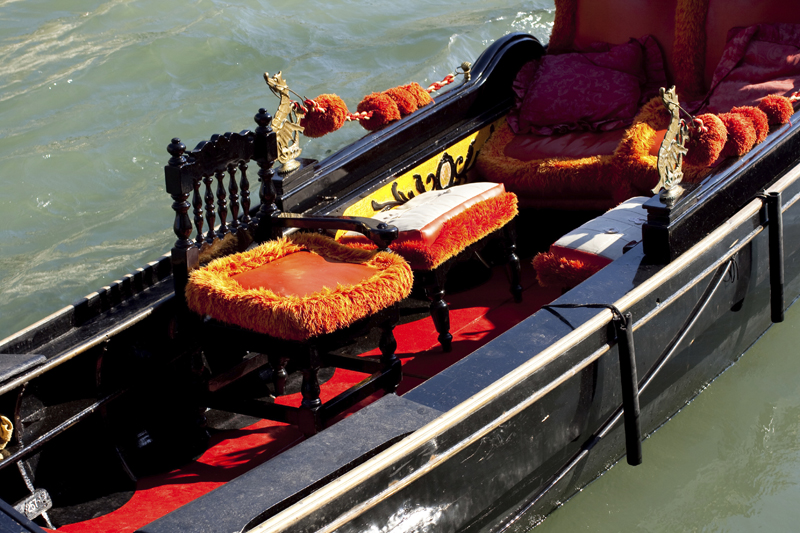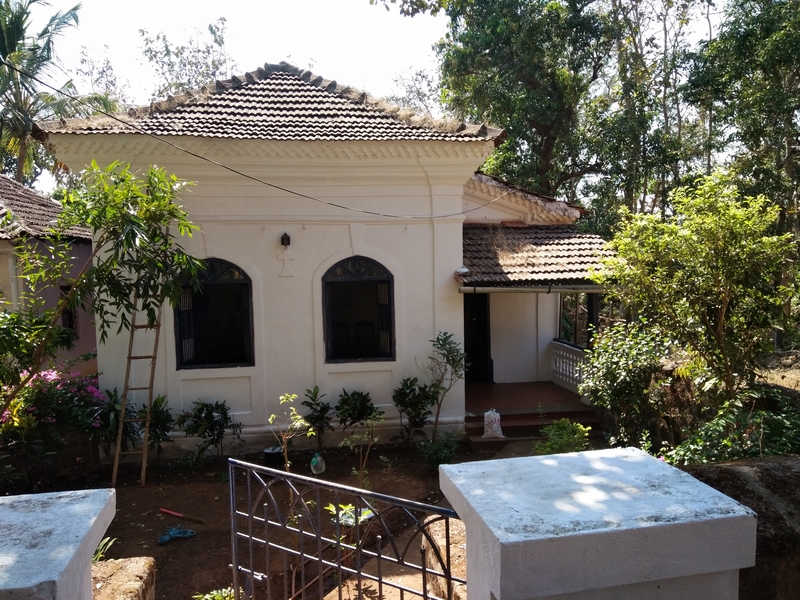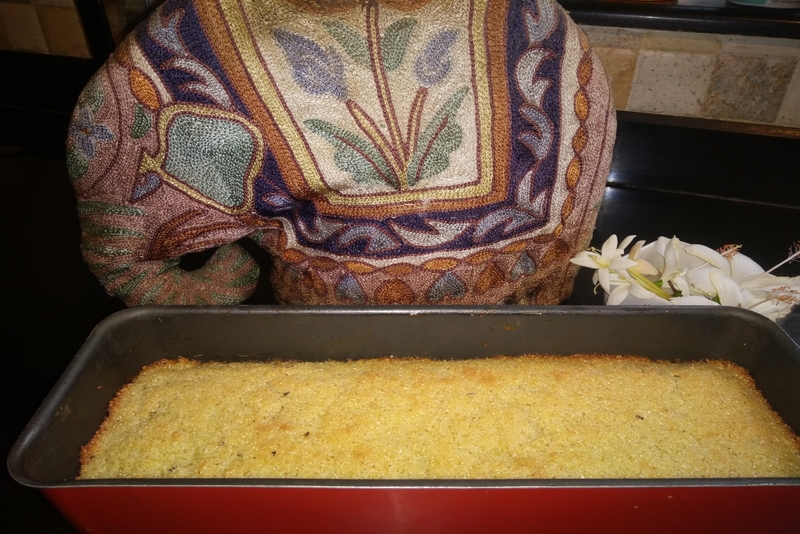Gondoliers in modern Venice , in Italy

Our gondolier sported a thick handlebar moustache worthy of the Italian Mafioso. A thin cigarette dangled dangerously from his mouth, hanging so loosely it seemed to brazenly flout the laws of physics.
The wires from his IPOD earphones stuck out from under the wasps of hair that straggled over his ears, the result of a gnarly, dishevelled hairstyle that seemed better fit for a Harley Davidson than one of the world’s most romantic vessels.His body language, including a stern commitment not to make eye contact with passengers, betrayed his ardent disinterest in the task at hand. We sat, along with the four strangers who had been randomly assigned to our gondola, sat in stunned silence, vigorously contemplating the $4 per minute we were paying for a “romantic” ride down Venice’s historic canals. It was anything but romantic.
Welcome to modern Venice! The once flamboyant and licentious imperial capital has given way to a commercialized and congealed modern shadow of itself.
Of course, evidence of its less savoury past hasn’t been totally hidden from view. The Palazzo Ducal (or the Doge’s Palace), which stood for half a millennia as the political home to Venice’s ruling aristocratic elite, is ornately designed inside and out, with gorgeous frescos from Venetian greats Tintoretto and Veronese lavishly displaying the City’s vainglorious past.
Also still here is the architecture that continues to attract throngs of foreign hordes: the ornate building facades, the precariously leaning bell towers, and the endless number of small stone bridges, no two exactly the same. And dig a little deeper and you might encounter the tales of orgy-preceding masquerade balls, feeding Venice’s retrospectively earned renaissance-era reputation as the Las Vegas of Europe.
Like a five-star museum on water, Venice’s glorious, promiscuous and often profligate past is told with stunning colour and panache. And yet somehow, Venice’s open-air exhibition assiduously maintains a milk and toast character as a non-offensive, family-friendly playground for the historically-inclined, parcelling out small tastes of its past in expensive bite-sized doses.
All that remains of the masquerade balls is the cheap knock-off masks that adorn almost every second storefront. In place of fish, once a staple of the Venetian diet, tourists flock to one of the ubiquitous crêpe stands for a skinny pancake slathered in heavy doses of Nutella. And as if to underline the point that modern Venice is a different breed from its long gone imperial ancestor, a gigantic Guess Jeans billboard flanks the left side of the seaside entrance to Venice’s main square, Piazza San Marco.
The frivolity and harmless excess of this Italian playground tends to increase in intensity, as you get closer to one of its many tourist traps. The boardwalk near Piazza San Marco is a continuous parade of humanity, as masses of western and Japanese tourists filter through the picture postcard stands and dodge the army of African-Italian men hocking cheap Gucci knock offs. Wilfully ignorant of the inconvenience they were causing, some of these men would set up shop on the narrow bridges that hop over the canals leading to the seaside, forcing passers-by to squeeze awkwardly together with their fleshy tourist brethren.
Not far away from this seaside boardwalk scene, the jam-packed Ponte di Rialto serves double duty. On one hand it’s a crowded pedestrian crossing for the Grand Canal. On the other, it’s a busy marketplace for cartoonish maps of Venice, Italian football jerseys, Murano-blown glass and expensive jewelry, among many other things. Once a place of exchange for traders from across the vast Venetian empire, the Rialto Bridge now gives passage across the canal to a different breed of shopper. Armed with two-scoops of gelato in one hand and a crinkled Venetian map in the other, these heftier modern visitors put the bridge under more strain than it had heretofore experienced.
But despite its often vapid and garish flashes, modern Venice still has undeniable charm to even the most cynical of visitors. The waft of canal stench is an ever-present reminder that not everything is artificially made for Venice’s multinational audience. Those who do venture east from Piazza San Marco and into the Castello neighbourhood get treated to a much needed respite from the crowds, as alleyway upon alleyway yields little but peace and quiet, not to mention a small grocer selling actual practical items like milk and bread.
For us, Venice at night was the real payoff. Most alleyways beyond the traditional haunts become quiet in the early evening, save for the clinking of plates against utensils, as the sport of eating in Venice reaches its daily crescendo. Occasionally you can hear the nighttime gondoliers singing their ballads in the distance, their location well hidden by the intense echo of the narrow canals. And the human circus that is Piazza San Marco in the daytime becomes the City’s crown jewel at night. Without fail, we returned every night on our visit just to bask in the atmosphere.
As we glided along on our “romantic” gondola ride, I caught a glimpse of the historic Bridge of Sighs - the most notorious of Venice’s endlessly fascinating canal bridges. Apparently it was so named for the resigned exhalation that came from prisoners as they crossed - prisoners who were often the victim of a fickle member of the ruling elite rather than guilty of any monstrous crime.
We contemplated these stories as we neared the end of our gondola ride. Maybe modern Venice wasn’t so bad after all - all the history with none of the violent fuss of living it.
The wires from his IPOD earphones stuck out from under the wasps of hair that straggled over his ears, the result of a gnarly, dishevelled hairstyle that seemed better fit for a Harley Davidson than one of the world’s most romantic vessels.His body language, including a stern commitment not to make eye contact with passengers, betrayed his ardent disinterest in the task at hand. We sat, along with the four strangers who had been randomly assigned to our gondola, sat in stunned silence, vigorously contemplating the $4 per minute we were paying for a “romantic” ride down Venice’s historic canals. It was anything but romantic.
Welcome to modern Venice! The once flamboyant and licentious imperial capital has given way to a commercialized and congealed modern shadow of itself.
Of course, evidence of its less savoury past hasn’t been totally hidden from view. The Palazzo Ducal (or the Doge’s Palace), which stood for half a millennia as the political home to Venice’s ruling aristocratic elite, is ornately designed inside and out, with gorgeous frescos from Venetian greats Tintoretto and Veronese lavishly displaying the City’s vainglorious past.
Also still here is the architecture that continues to attract throngs of foreign hordes: the ornate building facades, the precariously leaning bell towers, and the endless number of small stone bridges, no two exactly the same. And dig a little deeper and you might encounter the tales of orgy-preceding masquerade balls, feeding Venice’s retrospectively earned renaissance-era reputation as the Las Vegas of Europe.
Like a five-star museum on water, Venice’s glorious, promiscuous and often profligate past is told with stunning colour and panache. And yet somehow, Venice’s open-air exhibition assiduously maintains a milk and toast character as a non-offensive, family-friendly playground for the historically-inclined, parcelling out small tastes of its past in expensive bite-sized doses.
All that remains of the masquerade balls is the cheap knock-off masks that adorn almost every second storefront. In place of fish, once a staple of the Venetian diet, tourists flock to one of the ubiquitous crêpe stands for a skinny pancake slathered in heavy doses of Nutella. And as if to underline the point that modern Venice is a different breed from its long gone imperial ancestor, a gigantic Guess Jeans billboard flanks the left side of the seaside entrance to Venice’s main square, Piazza San Marco.
The frivolity and harmless excess of this Italian playground tends to increase in intensity, as you get closer to one of its many tourist traps. The boardwalk near Piazza San Marco is a continuous parade of humanity, as masses of western and Japanese tourists filter through the picture postcard stands and dodge the army of African-Italian men hocking cheap Gucci knock offs. Wilfully ignorant of the inconvenience they were causing, some of these men would set up shop on the narrow bridges that hop over the canals leading to the seaside, forcing passers-by to squeeze awkwardly together with their fleshy tourist brethren.
Not far away from this seaside boardwalk scene, the jam-packed Ponte di Rialto serves double duty. On one hand it’s a crowded pedestrian crossing for the Grand Canal. On the other, it’s a busy marketplace for cartoonish maps of Venice, Italian football jerseys, Murano-blown glass and expensive jewelry, among many other things. Once a place of exchange for traders from across the vast Venetian empire, the Rialto Bridge now gives passage across the canal to a different breed of shopper. Armed with two-scoops of gelato in one hand and a crinkled Venetian map in the other, these heftier modern visitors put the bridge under more strain than it had heretofore experienced.
But despite its often vapid and garish flashes, modern Venice still has undeniable charm to even the most cynical of visitors. The waft of canal stench is an ever-present reminder that not everything is artificially made for Venice’s multinational audience. Those who do venture east from Piazza San Marco and into the Castello neighbourhood get treated to a much needed respite from the crowds, as alleyway upon alleyway yields little but peace and quiet, not to mention a small grocer selling actual practical items like milk and bread.
For us, Venice at night was the real payoff. Most alleyways beyond the traditional haunts become quiet in the early evening, save for the clinking of plates against utensils, as the sport of eating in Venice reaches its daily crescendo. Occasionally you can hear the nighttime gondoliers singing their ballads in the distance, their location well hidden by the intense echo of the narrow canals. And the human circus that is Piazza San Marco in the daytime becomes the City’s crown jewel at night. Without fail, we returned every night on our visit just to bask in the atmosphere.
As we glided along on our “romantic” gondola ride, I caught a glimpse of the historic Bridge of Sighs - the most notorious of Venice’s endlessly fascinating canal bridges. Apparently it was so named for the resigned exhalation that came from prisoners as they crossed - prisoners who were often the victim of a fickle member of the ruling elite rather than guilty of any monstrous crime.
We contemplated these stories as we neared the end of our gondola ride. Maybe modern Venice wasn’t so bad after all - all the history with none of the violent fuss of living it.

Related Articles
Editor's Picks Articles
Top Ten Articles
Previous Features
Site Map
Content copyright © 2023 by Marianne de Nazareth. All rights reserved.
This content was written by Marianne de Nazareth. If you wish to use this content in any manner, you need written permission. Contact Marianne de Nazareth for details.





 -resizeimage.jpg.jpg)

